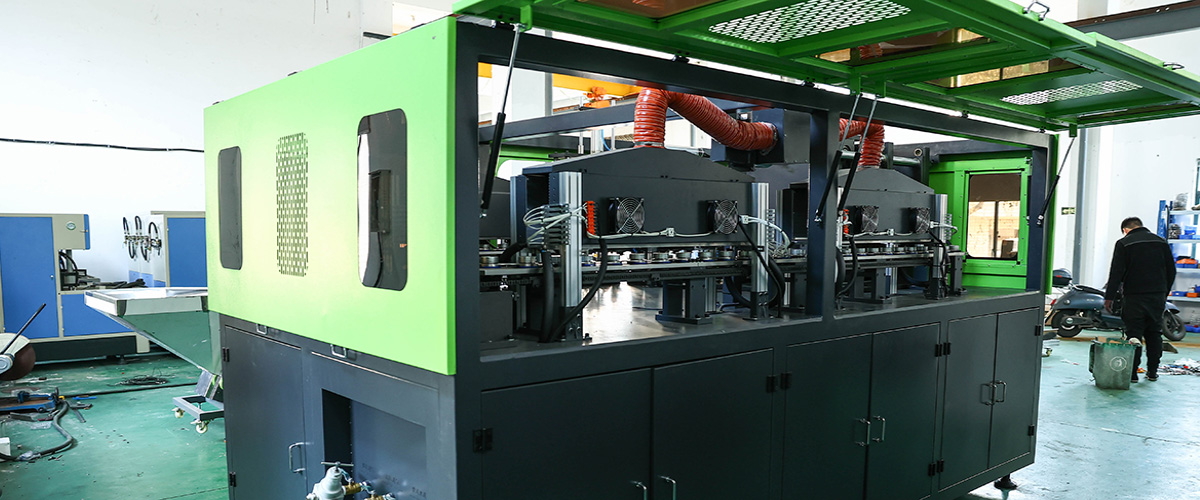high-speed, energy-saving, and energy-saving fully automatic bottle blowing machine, with an hourly output of over 3000 bottles;
high-speed, energy-saving, and energy-saving fully automatic bottle blowing machine, with an hourly output of over 3000 bottles;

Fully automatic blow molding machines are essential in modern manufacturing, enabling high-speed, efficient production of plastic bottles and containers. These machines are widely used in industries such as beverage packaging, pharmaceutical containers, and cosmetic packaging. This article explores the blow molding machine manufacturing process and highlights the key features of automatic blow molding equipment.
The process begins with plastic resin pellets (typically PET, HDPE, or PP) being fed into the machine’s hopper. The material is then heated to a molten state in the extrusion unit.
The molten plastic is extruded into a parison (preform tube), which is then clamped into a mold. In stretch blow molding, a preform is first injection-molded before being reheated and stretched.
High-pressure air (up to 40 bar) is injected into the parison, expanding it to match the mold’s shape. This step ensures precise bottle dimensions and consistent wall thickness.
The newly formed bottle is cooled rapidly to maintain its shape. Once solidified, the mold opens, and the finished product is ejected automatically.
Excess plastic (flash) is trimmed, and the bottles undergo automated quality checks for defects like uneven thickness or air bubbles.
Capable of producing 2,000 to 50,000 bottles per hour (depending on machine size).
Servo-driven systems reduce energy consumption by up to 30%.
PLC control systems ensure accurate temperature and pressure regulation.
Multi-cavity molds allow simultaneous production of multiple bottles.
Compatible with PET, HDPE, PP, and other thermoplastics.
Suitable for water bottles, oil containers, pharmaceutical vials, and cosmetic packaging.
All-electric blow molding machines reduce carbon footprint.
Heat recovery systems reuse excess energy.
Self-lubricating components minimize downtime.
Touchscreen HMI for easy monitoring and adjustments.
Fully automatic blow molding machines offer high-speed production, precision, and energy efficiency, making them ideal for plastic bottle manufacturers. By understanding the blow molding process and machine features, businesses can optimize their packaging production line for better productivity and cost savings.
Nees Any Help, Call Us 24/7 Full Support